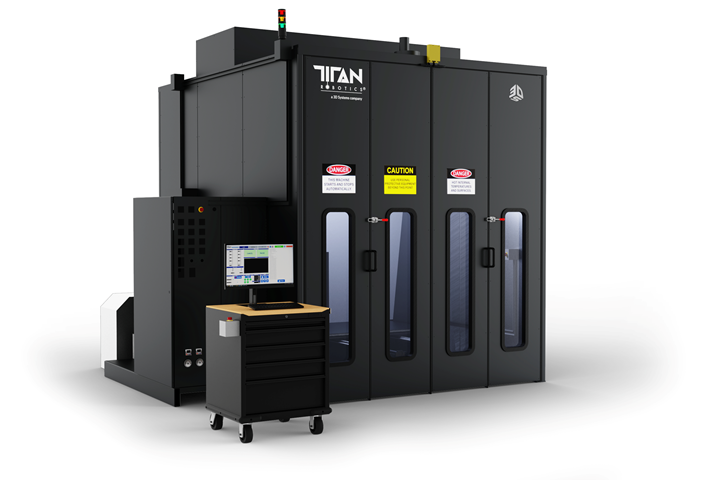Pellet Extrusion 3D Printing Raises Advantages in Thermoforming, Vacuum Forming Molds
3D Systems’ Atlas and Atlas-HS thermoplastic pellet extrusion 3D printers offer high-speed printing of molds with high-performance, high-temperature materials.
3D Systems’ large-format Atlas pellet extrusion 3D printers utilize affordable and high-performance thermoplastic pellet feedstocks for 3D printing medium- to large-sized tooling and molds for thermoforming and vacuum forming applications. The company’s pellet extrusion 3D printers are said to offer significant speed advantages, with the ability to print molds up to 1,270 × 1,270 × 1,820 mm (50 × 50 × 72") using high-performance and high-temperature materials at speeds up to 30,000 mm/min.
Printing directly with thermoplastic pellets offers several advantages as an additive manufacturing (AM) method, especially when it comes to reducing part costs and increasing print speeds, according to the company. Thermoplastic pellets are considered the lowest-cost feedstock for AM, costing up to 10 times less than other printing materials, such as thermoplastic filament.
3D Systems’ extrusion printers are configurable for operation with a wide range of materials and various nozzle sizes and toolheads, enabling manufacturers to optimize designs and produce higher-quality parts than they could using conventional production techniques. With a modular platform approach, 3D Systems’ 3D printers offer multi-toolhead setups, such as multiple extruders combined with a three-axis spindle. Such setups offer a a combination of additive and subtractive capabilities within a single platform to be able to print quickly with pellet extrusion and then machine the surface of a part either during or after the printing process for a smooth, accurate surface finish.
Extrusion-based AM for thermoforming and vacuum forming molds provides distinctive abilities in the moldmaking process, such as printing a porous surface to enable vacuum to pass through the mold without the need for special tools to make the vacuum holes. Additionally, AM enables the creation of varying infill densities to prioritize vacuum flow through the mold to certain zones, such as deep cavity features, to assure that the forming process delivers the part as required.
Related Content
-
Evaluating Metal Powders for Conformally Cooled Mold Inserts
Mechanical properties and design software techniques reveal the benefits of a modified high thermal conductivity metal powder for 3D printing in moldmaking.
-
MMT Chats: 4 Keys to a Successful Mold-Building Operation: Innovation, Transparency, Accessibility and Relationship
MoldMaking Technology Editorial Director Christina Fuges chats with Steve Michon, co-owner of Zero Tolerance in Clinton Township, Michigan, about the excitement of solving problems, the benefits of showing gratitude, the real struggle with delegation and the importance of staying on top of technology. This episode is brought to you by ISCAR with New Ideas for Machining Intelligently.
-
3D Printing Enables Better Coolant Delivery in Milling Operations
Just like 3D printing enabled conformal cooling channels in molds, additive manufacturing is now being used to optimize coolant delivery in cutting tools.







.jpg;maxWidth=300;quality=90)
.png;maxWidth=300;quality=90)





